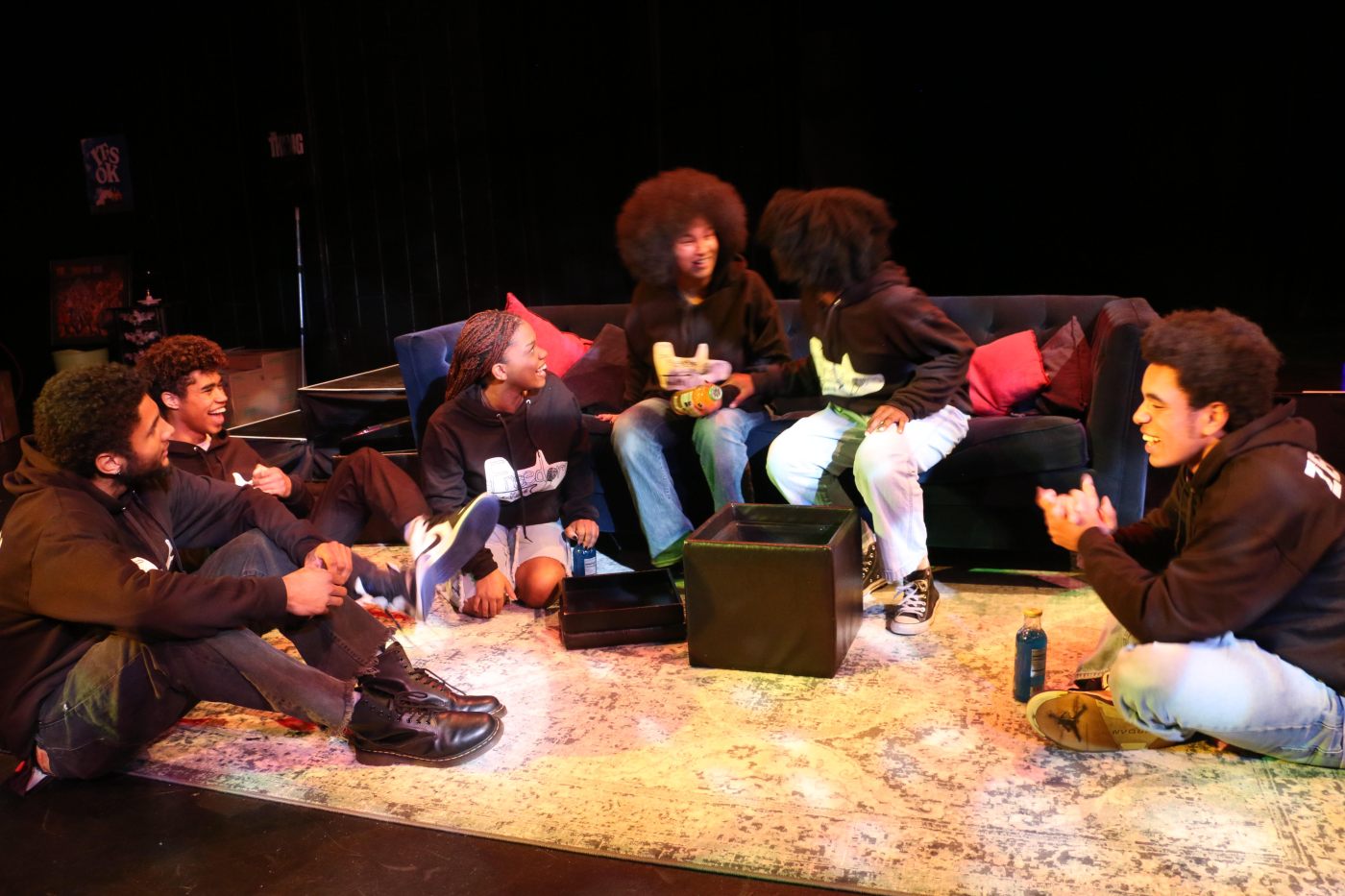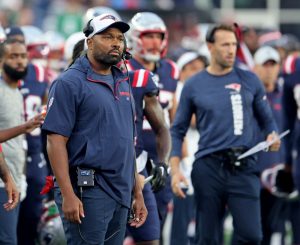
Artist profile: Budding St. Paul playwright saw own choreopoem for Black teens produced this summer
At 15 years old, Junie Edwards put pen to paper and wrote a play centering mental health in the Black teenage experience.
A year later, Edwards pitched it to Pillsbury House and Theatre in Minneapolis and, after two years of persistence, the play was developed at Pillsbury.
St. Paul playwright Junie Edwards (Courtesy of Erica Morrow)
“A Pick For The Hair Of Black Kids Who Don’t Wanna Be Gangstaz” was staged July 18-21 at Pillsbury. It’s a choreopoem that tells the story of six teenage poets who, in taking a break from rehearsing for a performance, share their deepest secrets or worst fears with one another. In doing so, they bond and process trauma together.
Edwards’ imagining of the play came from their own lived experiences.
“It’s an unapologetically Black story,” said Edwards, a recent graduate of the St. Paul Conservatory for the Performing Arts.
“Writing (the characters) wasn’t hard because all their stories are either something that I’ve been through, something that I’ve seen or something that I would have gone through if I had stayed in a cycle of trauma,” Edwards said.
What’s a choreopoem?
Choreopoem, a play that adds elements of music, poetry, lighting and other forms of active expression, originates from the African-American community, according to the National Museum of African American History and Culture.
Director Lester Mayers said “A Pick For The Hair Of Black Kids Who Don’t Wanna Be Gangstaz” is believed to be the first produced choreopoem by a Black teenager. Mayers said smaller scaled performances like this often do not receive the funding they deserve.
“I am sorry and sad to say that programs all across this world rarely include spaces for actors of this demographic and generation to have a chance to tell their stories, so kudos to Pillsbury for leading that conversation but also for showing people that it can be done,” Mayers said.
Highlighting mental health
Subjects the show covers include physical abuse, parental negligence and fear of the police along with other topics that pertain to both Black and individual experiences.
Related Articles
2024 election: What do Minnesotans think about Walz’s national spotlight?
‘Hilo de la Sangre,’ a Latin art exhibit on display at the MN Museum of American Art in St. Paul
First all-women St. Paul City Council inspires crochet project, museum exhibit
Hamline University settles lawsuit over showing of Prophet Muhammad in art history class
Made in St. Paul: Dreidels, by Lowertown woodworker and self-described ‘bearded old Jewish guy’ Stuart Barron
Edwards said growing up, their father was not a large part of their life. As a child Edwards had a lot of energy, always wanted to try new things and was uniquely expressive. It was Edwards’ mother who saw their talent, who saw them as an artist, they said. She began putting Edwards in art programs and schools. Though Edwards wanted to be an actor, their mother believed they were a powerful writer.
“She’s stepped up and shown me that love doesn’t have to come from two parents, love can be from one and love can be unconditional,” Edwards said. “That’s what she’s been trying to show me, as I’ve been growing into a young adult.
Working collaboratively
When Edwards initially asked Pillsbury Theater’s artistic producing director Signe Harriday if they could get their play on the theater’s stage, Edwards was offered instead with an opportunity to host a workshop for the performance. Through the workshop, Edwards got connected to Brooklyn-born creative artist Mayers, who would direct the performance.
Lester Mayers, director of “A Pick For The Hair Of Black Kids Who Don’t Wanna Be Gangstaz.” (Courtesy of Lester Mayers)
“I define myself as a storyteller who goes where the story is,” Mayers said.
During the workshop, the actors asked, “When are we gonna do this again?” and a fire was lit in Edwards to move their work into production. Edwards continued to refine their writing with Mayers, submitted the show to theaters across Minnesota and the two became a team.
“Junie’s passionate about the work as I am passionate about the work, and when you get two passionate cooks in the kitchen, every ingredient is life or death,” Mayers said.
Working collaboratively, the two were able to mesh their individual styles together and listen intently to each other’s feedback. Edwards said that working with Mayers allowed them to let go of their work, and trust Mayers’ creative direction. They said Mayers would add nuance that made their work feel more powerful than it did before and gave them the grace to experiment.
“For me it was a liberating experience,” Mayers said. “I like when people trust me, and I like when people are not afraid to challenge me. Junie did both of those things.”
The inspiration
Edwards’ choreopoem is inspired by Ntozake Shange’s Broadway musical, “For Colored Girls Who Have Considered Suicide/When The Rainbow Is Enuf.”
Edwards believes that a long title is poetic, and though their mother was concerned about whether or not the title could be abbreviated, Edwards did not share the sentiment.
“Every single word in the title just means something, and it’s powerful in that sense,” Edwards said.
Edwards and Mayers designed the experience to be a “Black space,” one that provided both the actors and audience with pockets of healing. Interludes like jump-roping, sporadic beat making and laughter were integrated to allow people to breathe and process, as they watched the actors talk through trauma. During the show, hums could be heard by audience members when a line resonated with them.
“There are many things in this script that are so Black, and it’s like that on purpose,” Edwards said.
Ensuring that the actors were actually teenagers was a necessity for Edwards. They said that too often when teenagers are represented in the media, they’re portrayed as social media obsessed, lacking in layers with little emotional presence and played by adult actors. They also expressed that writers rooms for teenage shows often exclude the Black narrative, or are written by non-Black voices.
“Our stories aren’t told, and if they are, they’re not told correctly,” Edwards said.
What the future holds
Both Edwards and Mayers have left Minnesota for New York. Edwards will be studying playwriting at Marymount Manhattan College and Mayers will teach at Ramapo College of Contemporary Arts while continuing to pursue creative endeavors (see the latest at lestermayers.com/upcomingz).
Edwards plans to continue writing plays that will grow with them. As this choreopoem centers teenagers, they imagine that as they age their shows will surround topics that relate to their stage of life.
“Though our voice is powerful and we’re able to use it, the power is taken away from us when people don’t listen,” Edwards said. “So how do I make people listen? How do I try to encourage people to open up their hearts?”
For Edwards, who describes themselves as “a playwright who creates a healing space for African-Americans in their writing,” this is the first of many productions they have envisioned will do just that.
Related Articles
‘The Physicists,’ staged by Dark & Stormy Productions, delves into the complicated lives of scientists
Mixed Precipitation’s latest Pickup Truck Opera perfectly pairs Depeche Mode, ‘Faust’
Laughter returns to the campaign trail with Brave New Workshop’s ‘Two Old Men’
Fringe review: ‘Turn Your Suck Into Suckcess’ is a spot-on satire that’ll inspire you to, well, suck less
Fringe review: ‘Intimate and Appropriate’ aims to offend, but with no insightful payoff


